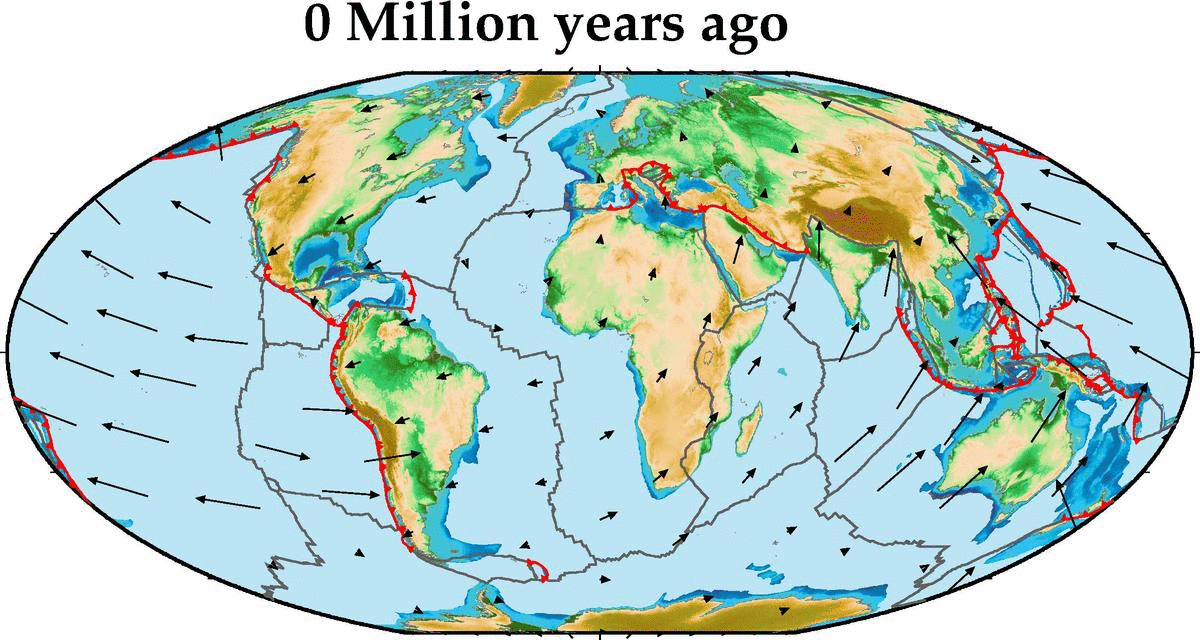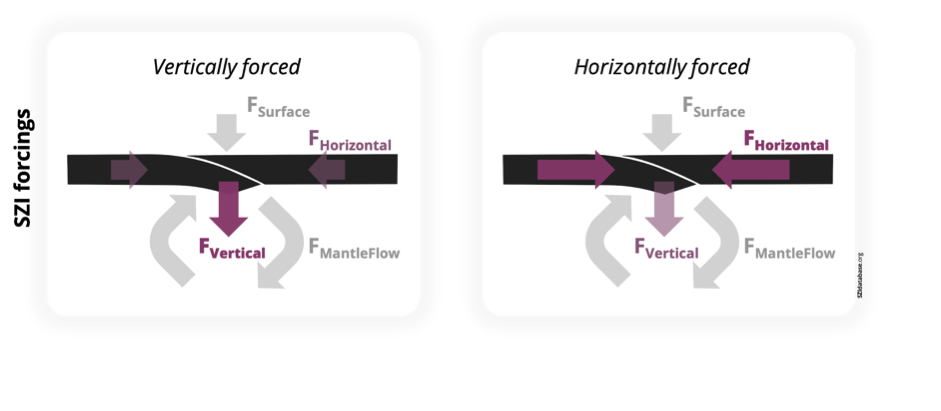Subduction is one of the defining characteristics of plate tectonics on Earth. It can involve an oceanic plate descending below a continental plate, or an oceanic plate going under another. Today, subduction is occurring in and around many different oceans, including along the Izu-Bonin Mariana Trench in the Pacific, or the Lesser Antilles arc in the Caribbean. Subduction zones are also well known due to their potential hazards like earthquakes, tsunamis, and volcanic explosions. Understanding subduction is also crucial to better understand why the Earth is unique, and how life was able to evolve.

The start of a new subduction zone at a point back in time can be referred to as subduction zone initiation (or SZI) event. And it turns out to be a pretty tricky process to understand. One of the reasons for this is because SZI occurs over millions of years and we cannot thus see it happening today easily. It is also difficult because the rock record of its earliest events have often already been subducted deep into the Earth’s mantle, or are highly deformed and buried. It is also complicated by the diversity of potential driving forces; such as, but not limited to, the arrival of hot mantle plumes, heavy sediment loading, water or melt intrusions, existing structural weakness or plate boundary, nearby subduction zones, and/or major mantle downwellings and features.

Rock packages such as ophiolites, metamorphic soles, and boninites can provide direct evidence for the juvenile subduction of an oceanic plate, but are not always available and can yield large uncertainties. Similarly, indirect geophysical evidence can be subject to non-uniqueness, or resolution issues. Hence the idea was born for a comprehensive trans-disciplinary tool, that would be open to feedback and ever-evolving insights from the community. (Note: this study focuses on how subduction zones re-initiate and are maintained on Earth, and not the other debated topic on how subduction, as a process, first started in the early Earth).
To achieve this, CEED gathered 14 international, early career researchers for a week in Drøbak, south of Oslo, for a week-long intensive SZI boot-camp. The participants’ backgrounds covered a range of disciplines, including plate tectonics, palaeomagnetism, structural geology, numerical modelling, geochemistry and seismology; which was a crucial element to successfully create a broad database. The project was led by Fabio Crameri, who has previously argued that the community needed unambiguous terms and accompanying definitions when discussing plate tectonics processes (see Ocean-Plate Tectonics; Crameri et al. (2019) doi:10.1016/j.tecto.2018.03.016).
One of the first problems the team came across was how to even define and characterise a “new” subduction zone. The team subsequently worked on new definitions/clarifications including:
- Subduction-zone initiation (SZI) is “the onset of downward plate motion forming a new slab, which later evolves into a self-sustaining subduction zone”.
- Another challenge was the prior use of the term “spontaneous” or “induced” subduction, which is problematic because it does not acknowledge that SZI is a dynamic process, and thus the team suggests “vertically” or “horizontally” forced subduction instead.

- Fore-arc basalts (FAB)” are a bit of a misnomer because they are named after the place the basalts are found today in the IBM (Izu-Bonin-Mariana) system. By using the term "early basalts", the very first lavas erupted during SZI are strictly and clearly referred to.
By first looking at subduction zones that initiated within the last 100 Million years (with the aim to identify more in this time, and also further back in time) the database contains over 100 fields for a single SZI event. By looking at common features across multiple SZI events, some of the following key insights were documented:
- At least 13 unique SZI sites were identified to have started within the last 100 million years.
- These events seem to cluster around two time periods; 6-16 Million years ago, and 40-55 Million years ago.
- Subduction was found to “breed” into other subduction; i.e. truly “spontaneous” is unlikely to have occurred in the recent past
- Horizontally forced subduction zone initiation (SZI) is dominant over vertically forced SZI; i.e. tectonic forces (i.e., the pull and push of surrounding plates) is an important ingredient.
- Well known SZI candidate sites, such as the Puysegur trench near New Zealand, are not considered to have yet developed into a “self-sustaining” zone and thus are not technically SZI events for this database.
Take a look at www.SZIdatabase.org for easy access to relevant SZI data, as well as an across-community discussion about SZI. Future iterations of the database will extend further back in time, as well as update entries as new data and findings come to light.

This work was funded as part of the YoungCEED initiative by Prof. Carmen Gaina, Director of the Centre for Earth Evolution and Dynamics (CEED) at the University of Oslo, Norway. The project was organised and executed exclusively by early-career researchers.
Link to the open access paper: Crameri, F., Magni, V., Domeier, M., Shephard, G., Chotalia, K., Cooper, G., Eakin, C. M., Grima, A. G., Guerer, D., Király, Á., Mulyukova, E., Peters, K., Robert, B., & Thielmann, M. (2020), A trans-disciplinary and community-driven database to unravel subduction zone initiation, Nature Communications 10.1038/s41467-020-17522-9





